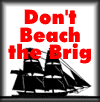|
||||||||||
|
CMHS Home
PPCLI in WW1
Activities 
|
"...when Britain is at war, Canada is at war..."The Great War for CivilizationPopular histories of the war frequently state that the war was started when Gavrillo Princep, a Serbian National, stepped up to the car in which rode the Heir to the Austrian Throne and shot its occupants. This perhaps was the "straw that broke the camels back", but the problem of European politics at the time was far more complex than that single act. The political atmosphere was very charged at the time for a number of reasons. France was still angry over the loss of the Alsace-Lorraine region in the Franco-Prussian War, the Austo-Hungarian Empire was on the decline, Germany was in the hands of her Generals, Russia felt the need to defend Serbia, and poor little Belgium was in the way of the Von Schleiffen plan. The Germans put up an eastern defence to stop a slow Russian Army and used the well established transportation systems in the west to advance against Russia's ally, France. To do this the Germans had to cross Belgium. King Albert of Belgium protested and was promptly ignored and so he called for help. Britain had signed a treaty with Belgium, France and Prussia in 1839 to defend Belgium's neutrality, and so Britain declared war on Germany on August 4th, 1914. The war would rage for four years, destroy huge tracts of land, wipe out national treasures, bankrupt countries, cause mutinies, riots, trigger a revolution, and all that pales at the appalling loss of human life. In retrospect, we can see that the war was often ill-led and poorly planned with the foot soldier paying the price for the on-the-job training of the commanders. The first armies of Europe clashed in Northern France and after a series of sharp engagements, the Germans were stopped in Flanders. Both sides were bloodied and weakened and dug in to consolidate their positions. Trench warfare had begun. Canada Answers the Call !Sir Wilfred Laurier once said, "...when Britain is at war, Canada is at war. There is no distinction." As of August 4th, 1914, Canada was officially at war with Germany. The Minister of Militia, Sam Huges, leapt into action and immediately began preparations for training an army. A training camp was built at Valcartier with various other training depots based on Militia training camps being used for gathering the army together. Note: Those who live in the Niagara Region are well aware that the reserve around the present Fort George was a training base called variously, "Camp Niagara", "the Otter Trail", and "Butlers Barracks". The Canadian Army of 1914 (prior to the outbreak of war), was made up of 3,000 regulars and a volunteer militia of 60,000. On August 6th, 1914, Parliament authorized the raising of 25,000 troops for duty in Europe. Immediately, 33,000 volunteered. The Canadian Troops were sent to England first, where they trained on the Salisbury Plain, and were then sent to France. In all, Canada mobilized 619,636 and suffered 245,054 casualties or 40.4%. The Von Schleiffen Plan 1905
The Schlieffen Plan, the German General Staff's overall strategic blueprint for victory on the western front against France in the years up to 1914, takes its name from its author, Alfred Graf von Schlieffen (1833 - 1913). In essence it envisaged a rapid German mobilization, disregard of Luxembourg, Belgian and Dutch neutrality, and the overwhelming sweep of German armies through Belgium southwards in the back of the French defenses pivoting on weakly-held left-wing positions in the province of Alsace-Lorraine. Paris was not to be taken but to be by-passed in the east. The intent of the plan was not to conquer cities or industry in order to weaken the French war efforts, but to capture most of the French army and to force France to surrender. Schlieffen in fact viewed the double encirclement of the entire French Army by the right wing coming from the North and West of France and the left wing coming from the East as the ultimate objective of his plan, his inspiration being the encirclement of the Roman Army by Hannibal's forces at the Battle of Cannae.
Canada's Unofficial and Official National Anthem.This recording was released by the The Maple Leaf ForeverAlexander Muir wrote The Maple Leaf Forever as Canada's confederation song in 1867; it was regarded as the national song for several decades. O' Canada"O Canada" was proclaimed Canada's national anthem on July 1, 1980, 100 years after it was first sung on June 24, 1880. |
|||||||||


